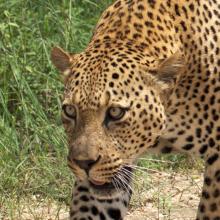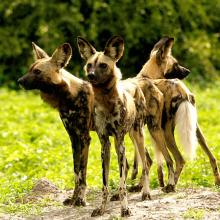+264 (0)61 240 140admin@n-c-e.org
Namibian Carnivore Working Group
Namibia's Carnivores
Threats to Namibia's carnivores
A number of common threats are faced by many terrestrial carnivore species in Namibia, as well as threats specific to particular species based on their habitat and ecology. The most significant common threats are:
- Human-wildlife conflict, when carnivores are deliberately killed or targeted in response to real, perceived or anticipated damages caused or expected to be caused. The most common methods used to kill predators are poisoning, trapping, shooting, and digging out breeding dens to kill the young. A number of these methods are very indiscriminate, resulting in many hundreds of non-target animals and species being killed, such as vultures, eagles and kites. They are also largely ineffective, sometimes adding to the problem by disrupting stable populations and opening the area to subadult animals that cause a worse problem, and severely impacting on biodiversity and ecosystem health. Best farming practices focus on protecting livestock, not killing predators.
- Habitat loss, fragmentation and degradation. A particularly concerning trend is the expansion of game-proof and electric fencing across the country which fragments the landscape and prevents mobility for wildlife generally which is their most important adaptation to an arid environment.
- Bycatch or collateral killing, when non-target species such as Black-footed Cat, genets and mongooses (as well as non-carnivore species) are killed instead of the target individual or species. The most indiscriminate forms of predator control are poisons, snares and gin traps. These methods need to be outlawed. Poisons have a particularly devastating impact on non-target species, particularly birds of prey. It has been estimated that for every individual of a target species killed, over 100 non-target animals are poisoned.
- Species killed or captured deliberately to use their parts, traffic their skin, bone, teeth, or sell their young live in the illegal wildlife trade.
Actions
By addressing these common threats, positive outcomes can be achieved for most species. The priority actions arising from the Carnivore Red Data Book are:
- Establish this multi-stakeholder national Carnivore Working Group to –
- Develop strategies and action plans for all threatened species
- Form species specific task forces to raise funds and implement the strategies and plans
- Monitor and assess impacts of actions on the status of carnivore populations
- Update information on both threats and actions as relevant per species and adapt implementation accordingly.
- Assist farmers to improve rangeland and livestock management, and especially –
- Focus on the protection of livestock and not on the killing of predators, as this delivers far better and most cost-effective outcomes and healthy ecosystems
- Restore and regenerate rangeland through good management that builds soil carbon, perennial grasses and good grass-bush/tree ratios
- Build and maintain wildlife biodiversity so that there is sufficient natural prey available to predators
- Develop and implement clear protocols for dealing with persistent predators problems.
- Design and implement a national carnivore awareness programme that is targeted at specific sectors and supported by all members of the NCWG to –
- Increase understanding of the important role of carnivores in ecosystems and to improve farmer tolerance and appreciation of carnivores on their land
- Work with the tourism sector, conservancies and wildlife credit programmes to incentivise carnivore-based tourism with benefits to farmers / conservancies to help offset costs of living with these animals
- Work with farmers and hunters to optimise benefits to landowners and custodians from sustainable use of selected carnivore species.
- Develop a national research framework for carnivores to –
- Monitor carnivore population status, distribution and trends for all carnivores, but with a special focus on threatened species and high-risk areas
- Collect more and higher quality data, including economic data, to better inform management actions
- Obtain better time-series information on causes of mortality, the severity of threats and appropriate responses.





